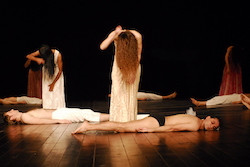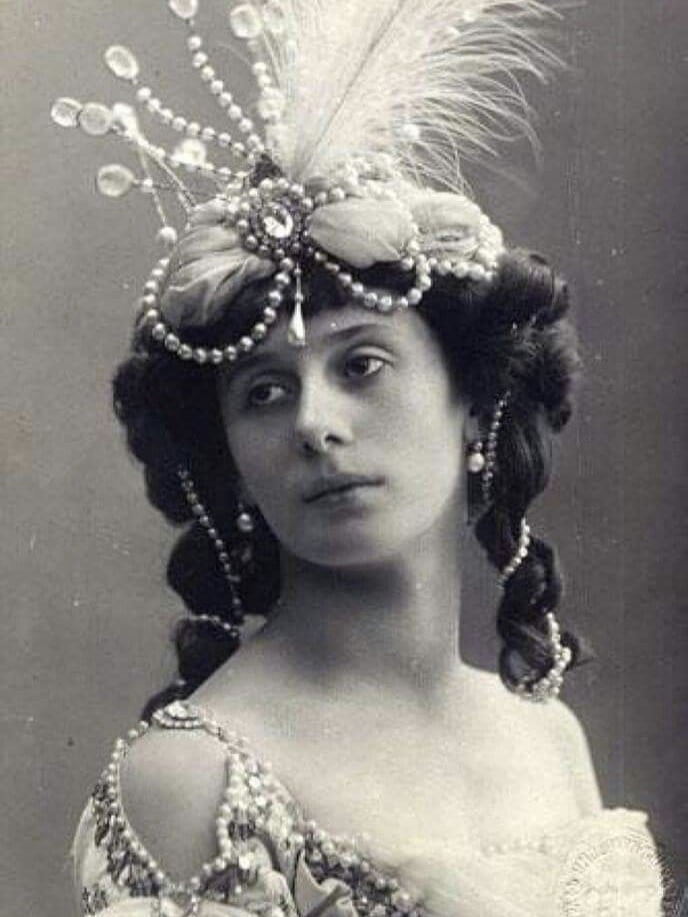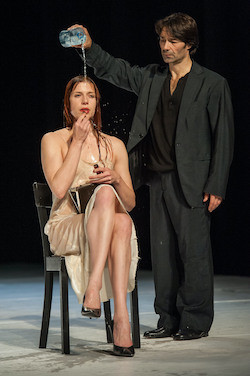Last year, amidst the vibrant pulse of New York City, I was immersed in rehearsals. The project was a dance theater piece, a fresh take on a Tennessee Williams play, unfolding in a downtown studio. Then came the email – a directive stating dance theater couldn’t occupy dance studios. My immediate reaction was a passionate reply, articulating the very essence of dance theater. As a dance artist at heart, my work fundamentally relies on dance. Moreover, traditional theater studios, often cramped with props and furniture and floored with concrete, pose safety risks for dancers. A wave of emotions washed over me: anger, confusion, and sheer frustration. This studio, known for embracing diverse performance styles, was questioning my art form. While the issue was quickly resolved, it ignited a deeper question: Why is dance theater still so misunderstood?
Unpacking Dance Theater: More Than Just Steps
Dance theater is a captivating art form rooted in dance, yet it transcends traditional dance boundaries. It’s about crafting a world on stage through intense physical and emotional interactions. Roland Langer, in 1984, described its core elements as a fusion of “dance, speaking, singing, conventional theater, and the use of props, set and costumes in one amalgam.” Unlike conventional narratives, dance theater often eschews linear plots. Instead, it delves into specific situations, explores deep-seated fears, and portrays raw human conflicts. This makes it as much a conceptual exploration as it is a dramatic and physical performance. When you Go Dance in a theater context like this, you are entering a world of layered meaning.
A Glimpse into History: The Genesis of Dance Theater
Dance theater’s origins can be traced back to pioneers like Rudolph Laban (1879-1958), Kurt Jooss (1901-1979), and Mary Wigman (1886-1973). These visionaries developed Ausdruckstanz, a German expressionist dance form. They drew inspiration from the early 20th-century German Expressionism movement in painting, which prioritized conveying inner emotions and ideas over mere realistic depictions. In the aftermath of World War I, artists felt a profound disconnect with established artistic norms. Ballet, for instance, was perceived as an outdated genre, failing to express the raw, individual responses to war and its repercussions – feelings of fear, loss, and longing.
 Pina Bausch in ‘Nefés’, highlighting her influential role in dance theater history.
Pina Bausch in ‘Nefés’, highlighting her influential role in dance theater history.
Kurt Jooss’s student, Pina Bausch (1940-2009), is widely celebrated as the leading figure in dance theater. Royd Climenhaga (2018) suggests that Bausch, emerging as a choreographer in the 1960s, was influenced not only by Jooss and German Expressionism but also by theater artists who were experimenting with creating immersive stage worlds, rather than simply depicting worlds on stage. When you consider where to go dance to experience innovation, Bausch’s era is a pivotal point.
Pina Bausch: Shaping the Landscape of Dance Theater
Bausch’s work defies traditional theatrical structures. Instead of a linear narrative, she constructed performances as sequences of vignettes, often inspired by a central theme or a specific place. Her stagecraft involved creating tangible, symbolic worlds using elements like water, flowers, dirt, and rubble. In these immersive environments, performers engaged in a range of actions – speaking, running, dancing, sweating, even physical confrontations and moments of tenderness. Her focus was on raw, individual responses to human experiences, expressed with intense physicality and a distinctly expressive movement vocabulary. Bausch’s groundbreaking work significantly elevated the genre’s aesthetic standing in Europe.
Dance Theater in America: Finding Its Footing
Dance theater doesn’t share a deep historical lineage in the U.S., which has contributed to its comparatively lower popularity. Early pioneers of American modern dance, including Martha Graham, Sophie Maslow, and Anna Sokolow, did create works with socially conscious themes and developed expressive movement languages. However, by the 1940s, a shift occurred away from Expressionism towards abstract dance, exemplified by Merce Cunningham’s work. Yet, if you are looking to go dance in a way that is socially engaged, these pioneers laid some groundwork.
However, between the mid-1980s and 1990s, a generation of choreographers emerged who could be considered American dance theater artists. These downtown NYC dancers—Bill T. Jones/Arnie Zane, Doug Varone, Bebe Miller, Ralph Lemon, Sara Pearson and Patrik Widrig, and Tere O’Connor—explored political and social themes, creating works echoing European dance theater with its blend of dance and theater, spoken word, theatrical vignettes, and use of the body as a primary mode of expression. They were aware of early modern dance pioneers and the experimental work of the Judson Theater in the 1960s, where artists challenged performance norms and mixed genres.
 Anna Sokolow’s ‘Steps of Silence’ exemplifies socially conscious themes in early American dance.
Anna Sokolow’s ‘Steps of Silence’ exemplifies socially conscious themes in early American dance.
The 1980s, mirroring the 1960s, was a period of significant social and political upheaval. Artists were deeply affected by the Reagan-era recession, the AIDS epidemic, the rise of neo-conservatism, and persistent racism and misogyny. Bebe Miller articulated that her work is “rooted in the human condition.” This artistic focus reflected the concerns of this generation of choreographers, echoing the motivations of early German and European dance theater creators. For those wondering where to go dance with purpose, this era of American dance theater offered powerful avenues.
By the late 1990s, dance trends shifted again, prioritizing abstract, movement-centric choreography. Dance theater became a more niche form.
Dance Theater Today: A Resurgence of Interest
In the U.S., we’re witnessing a renewed interest in dance theater. Dance critic Siobhan Burke (2017) points to Annie B. Parson, Okwui Okpokwasili, and Faye Driscoll as contemporary dance theater artists. David Neumann and Raja Feather Kelly are also key figures in this evolving landscape. As more dance artists explore dance theater, identity questions persist. Even the spelling varies – dance/theatre, dance theater, dance-theater. Beyond semantics, the real challenges in America are in training and performance opportunities.
 Pina Bausch’s ‘como el musguito en la piedra, ay si, si, si…’ showcases the emotional depth of dance theater.
Pina Bausch’s ‘como el musguito en la piedra, ay si, si, si…’ showcases the emotional depth of dance theater.
Training is crucial for dancers aspiring to perform in dance theater. I once saw a performance by an emerging choreographer (billed as dance theater) where narrative was central, but the dancers lacked the vocal skills for stage projection. The experience was frustrating, like listening to disjointed music. If you are considering where to go dance and train in this multidisciplinary art, specialized programs are vital.
Furthermore, curators of smaller dance venues can intentionally program dance theater, providing more platforms for artists to develop ideas and resolve creative challenges, like integrating spoken word. Curators might hesitate due to the genre’s definitional ambiguity and inconsistent labeling. This lack of clarity can lead to missed opportunities for dance theater artists.
Historically, the American art scene has been deeply experimental. Yet, American society often leans towards categorization. These conflicting values have sometimes marginalized art movements and forms. Perhaps it’s time to move beyond labeling and defining. Let dance theater exist for what it is: a dance-based art form drawing from a rich blend of disciplines. Instead, let’s focus on creating conditions for it to thrive and evolve uniquely on American soil. When you decide to go dance, consider exploring the expansive world of dance theater.
By Nicole Colbert of Dance Informa.
